Geometric Accuracy Improvement by Using Electrochemical Reaming with a Helical Tube Electrode as Post-Processing for EDM
Abstract
1. Introduction
2. Machining Principle of Electrochemical Reaming Using a Helical Tube Electrode as Post-Processing for EDM
3. Flow Field Simulation of Electrochemical Reaming with a Helical Tube Electrode
4. Experimental Materials and Parameter Setup
5. Results and Discussion
5.1. Comparison of Shape Accuracy and Surface Quality of Holes Machined by Different Methods
5.2. Improved Performance of ECM Post-Processing for EDM
5.2.1. Effect of Applied Voltage of Electrochemical Reaming on Hole Accuracy
5.2.2. Effect of Electrolyte Concentration in Electrochemical Reaming on Hole Accuracy
5.2.3. Effect of Duration of Electrochemical Reaming on Hole Accuracy
5.2.4. Optimized Machining Parameters
6. Conclusions
- Simulations of the flow field in the gap show that, compared with an ordinary circular tube electrode, a helical tube electrode was better at promoting renewal of electrolyte. When the helical electrode was used to process the holes, the concentrated velocity distribution within the machining gap increased from 39.91 m/s to 69.41 m/s. Within the range of 1–5 MPa flushing pressure, the maximum flow velocity in the machining gap increased from 23 m/s to 45 m/s.
- Comparative experimental results show that post-processing with electrochemical reaming clearly improved the shape precision of holes, including the taper and exit circularity. With the use of electrochemical post-processing for EDM, the exit radius was increased from 538.86 µm to 615.84 µm, while the taper was reduced by more than 50%. Moreover, the surface defects in holes machined by EDM were effectively removed by electrochemical dissolution reactions.
- The optimum combination of machining parameters was found to be an applied voltage of 30 V, an electrolyte concentration of 6 g/L, and a duration of electrochemical reaming of 25 s.
Author Contributions
Funding
Acknowledgments
Conflicts of Interest
References
- Krewinkel, R. A review of gas turbine effusion cooling studies. Int. J. Heat Mass Transf. 2013, 66, 706–722. [Google Scholar] [CrossRef]
- Bilgi, D.S.; Jain, V.K.; Shekhar, R.; Mehrotra, S. Electrochemical deep hole drilling in super alloy for turbine application. J. Mater. Process. Technol. 2004, 149, 445–452. [Google Scholar] [CrossRef]
- Zhang, Y.H.; Qu, N.S.; Fang, X.L.; Wang, X.D. Eliminating spikes by optimizing machining parameters in electrochemical drilling. J. Manuf. Process. 2019, 37, 488–495. [Google Scholar] [CrossRef]
- Abbas, N.M. A review on current research trends in electrical discharge machining (EDM). Int. J. Mach. Tools Manuf. 2008, 47, 1214–1228. [Google Scholar] [CrossRef]
- Lee, H.T.; Tai, T.Y. Relationship between EDM parameters and surface crack formation. J. Mater. Process. Technol. 2003, 142, 676–683. [Google Scholar] [CrossRef]
- Ferraris, E.; Castiglioni, V.; Ceyssens, F.; Annoni, M.; Lauwers, B.; Reynaerts, D. EDM drilling of ultra-high aspect ratio micro holes with insulated tools. CIRP Ann. Manuf. Technol. 2013, 62, 191–194. [Google Scholar] [CrossRef]
- Wang, K.; Zhang, Q.H.; Zhu, G.; Liu, Q.Y. Experimental study on micro electrical discharge machining with helical electrode. Int. J. Adv. Manuf. Technol. 2017, 93, 2639–2645. [Google Scholar] [CrossRef]
- Kliuev, M.; Florio, K. Influence of energy fraction in EDM drilling of Inconel 718 by statistical analysis and finite element crater-modelling. J. Manuf. Process. 2019, 40, 84–93. [Google Scholar] [CrossRef]
- Amineh, S.K.; Tehrani, A.F.; Mohammadi, A. Improving the surface quality in wire electrical discharge machined specimens by removing the recast layer using magnetic abrasive finishing method. Int. J. Adv. Manuf. Technol. 2013, 66, 1793–1803. [Google Scholar]
- Nguyen, M.D.; Rahman, M.; Wong, Y.S. Simultaneous micro-EDM and micro-ECM in low-resistivity deionized water. Int. J. Mach. Tools Manuf. 2012, 54–55, 55–65. [Google Scholar] [CrossRef]
- Kurita, T.; Hattori, M. A study of EDM and ECM/ECM-lapping complex machining technology. Int. J. Mach. Tools Manuf. 2006, 46, 1804–1810. [Google Scholar] [CrossRef]
- Wu, X.Y.; Li, S.J.; Jia, Z.; Xin, B.; Yin, X.C. Using WECM to remove the recast layer and reduce the surface roughness of WEDM surface. J. Mater. Process. Technol. 2009, 268, 140–148. [Google Scholar] [CrossRef]
- Han, M.S.; Min, B.K.; Lee, S.J. Improvement of surface integrity of electrochemical discharge machining process using powder-mixed electrolyte. J. Mater. Process. Technol. 2007, 191, 224–227. [Google Scholar] [CrossRef]
- Han, Y.X.; Liu, Z.D.; Cao, Z.L.; Kong, L.L.; Qiu, M.B. Mechanism study of the combined process of electrical discharge machining ablation and electrochemical machining in aerosol dielectric. J. Mater. Process. Technol. 2018, 254, 221–228. [Google Scholar] [CrossRef]
- Kang, K.; Tang, W.D. Micro-drilling in ceramic-coated Ni-superalloy by electrochemical discharge machining. J. Mater. Process. Technol. 2018, 255, 656–664. [Google Scholar] [CrossRef]
- Natsu, W.; Nakayama, H.; Yu, Z.Y. Improvement of ECM characteristics by applying Ultrasonic Vibration. Int. J. Precis. Eng. Manuf. 2012, 13, 1131–1136. [Google Scholar] [CrossRef]
- Qu, N.S.; Ji, H.J.; Zeng, Y.B. Wire electrochemical machining using reciprocated traveling wire. Int. J. Adv. Manuf. Technol. 2014, 72, 677–683. [Google Scholar] [CrossRef]
- Liu, Y.; Li, M.; Niu, J.; Lu, S.; Jiang, Y. Fabrication of taper free micro-holes utilizing a combined rotating helical electrode and short voltage pulse by ECM. Micromachines 2019, 10, 28. [Google Scholar] [CrossRef]
- Wang, C.C.; Chow, H.M.; Yang, L.D.; Chun, T.L. Recast layer removal after electrical discharge machining via Taguchi analysis: A feasibility study. J. Mater. Process. Technol. 2009, 209, 4134–4140. [Google Scholar] [CrossRef]
- Hung, J.; Liu, H.; Chang, Y.; Hung, K.; Liu, S. Development of helical electrode insulation layer for electrochemical microdrilling. Procedia Cirp 2013, 6, 373–377. [Google Scholar] [CrossRef][Green Version]
- Fang, X.L.; Zhang, P.F.; Zeng, Y.; Qu, N.S.; Zhu, D. Enhancement of performance of wire electrochemical micromachining using a rotary helical electrode. J. Mater. Process. Technol. 2016, 227, 129–137. [Google Scholar]
- Liu, Y.; Wei, Z.Y.; Wang, M.Y.; Zhang, J.H. Experimental investigation of micro wire electrochemical discharge machining by using a rotating helical tool. J. Manuf. Process. 2017, 29, 265–271. [Google Scholar] [CrossRef]
- Plaza, S.; Sanchez, J.A.; Perez, E.; Gil, R.; Izquierdo, B.; Ortega, N. Experimental study on micro EDM-drilling of Ti6Al4V using helical electrode. Precis. Eng. 2014, 38, 821–827. [Google Scholar] [CrossRef]
- Hung, J.C.; Lin, J.K.; Yan, B.H.; Liu, H.S.; Ho, P.H. Using a helical micro-tool in micro-EDM combined with ultrasonic vibration for micro-hole machining. J. Micromech. Microeng. 2006, 16, 2705. [Google Scholar] [CrossRef]
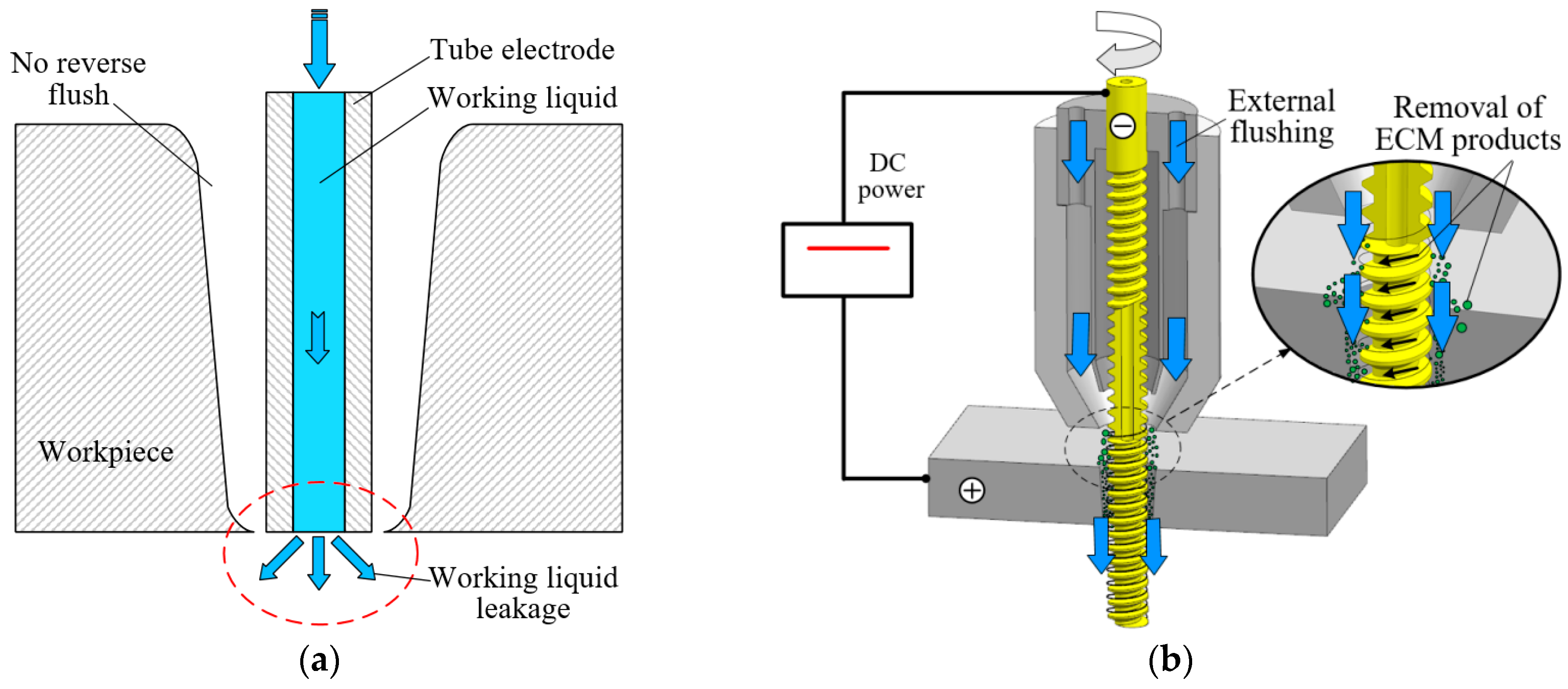

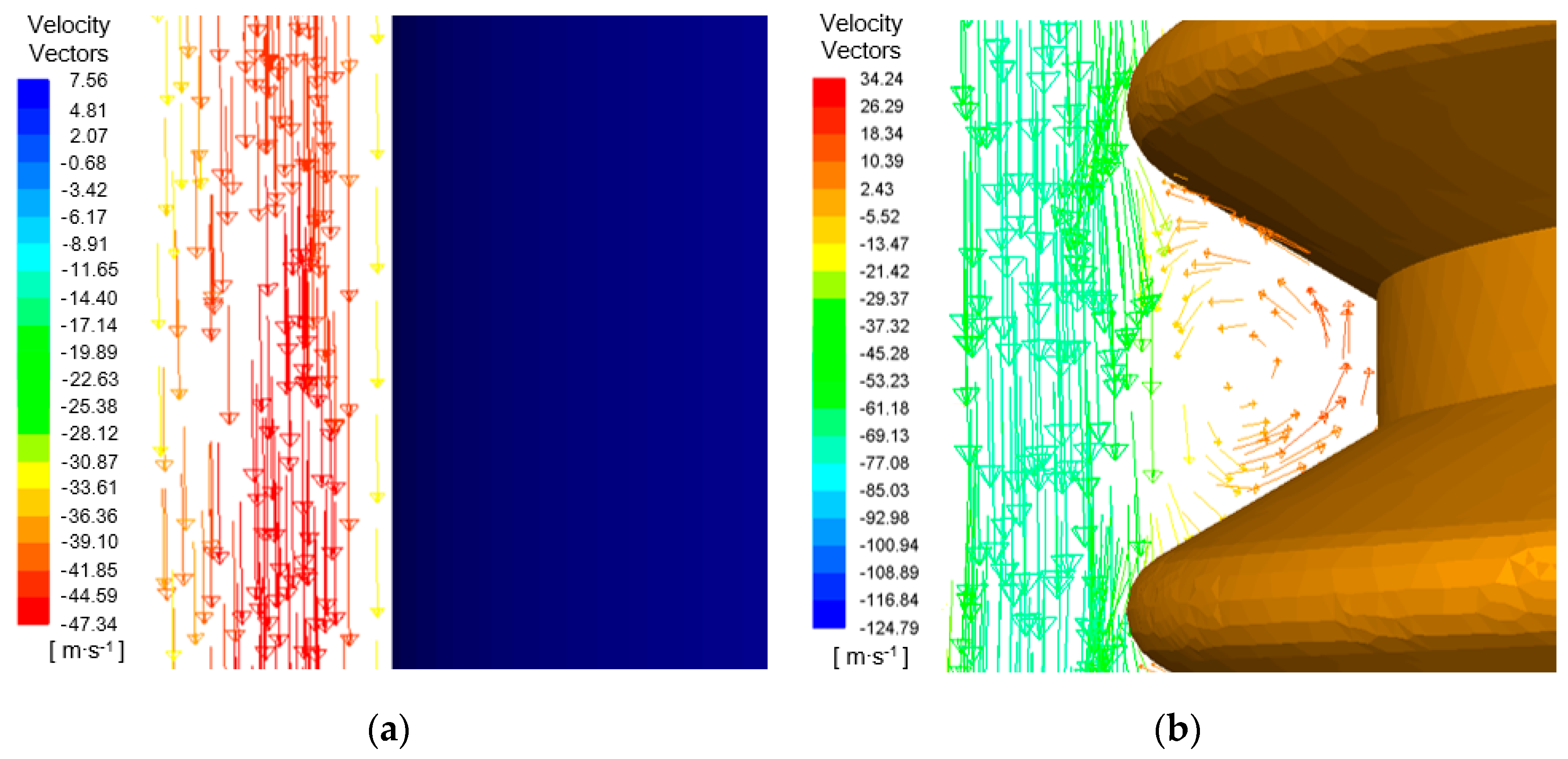
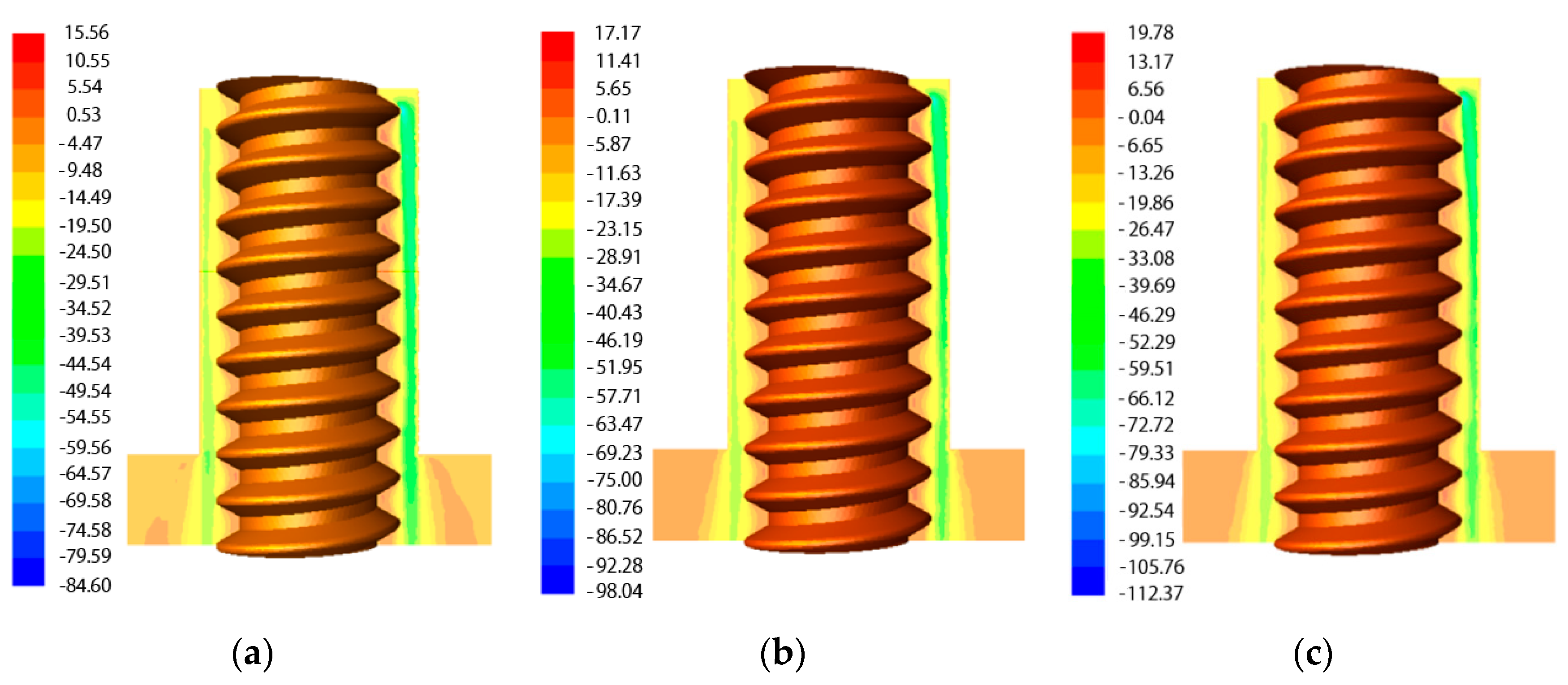
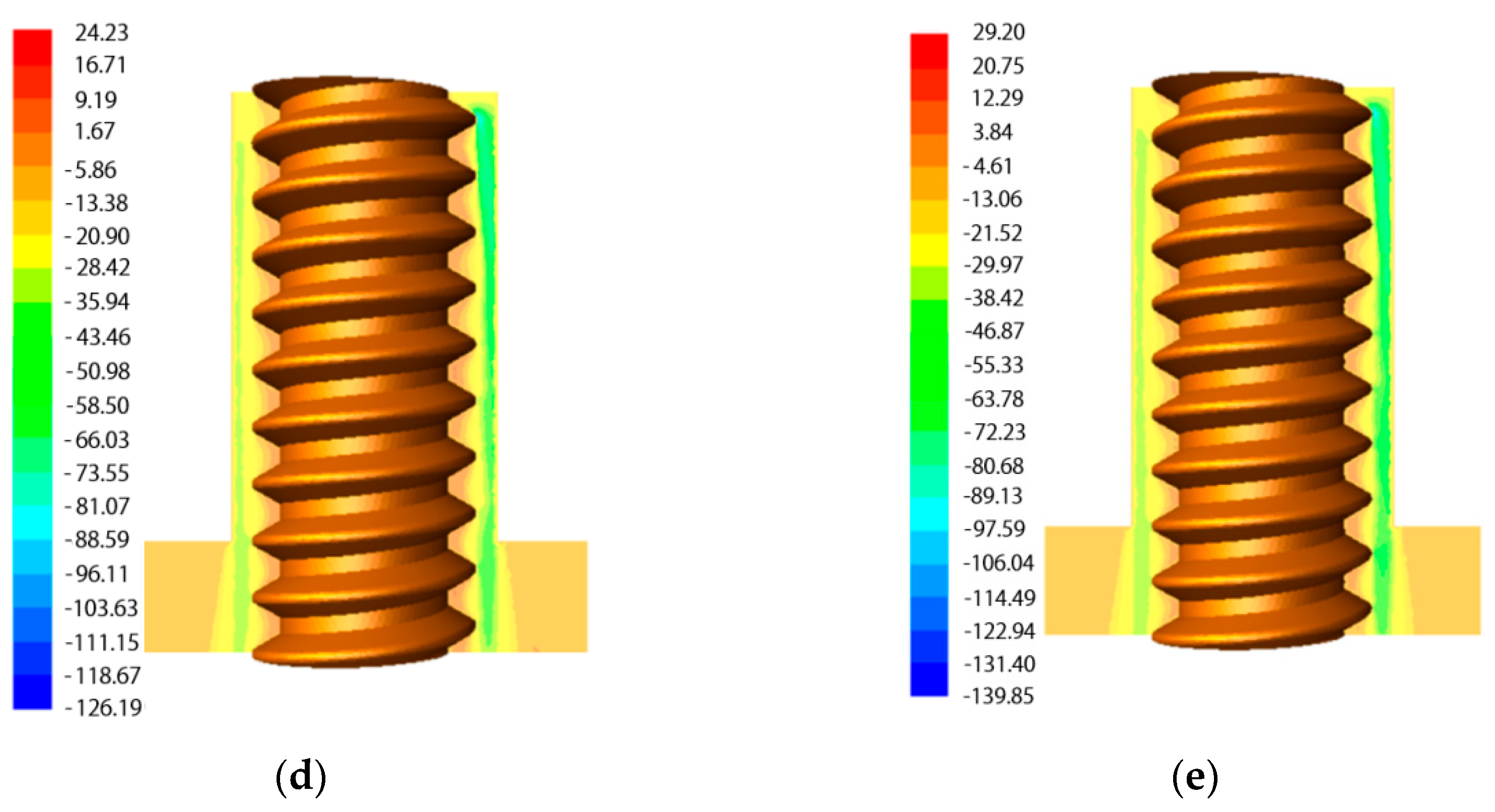
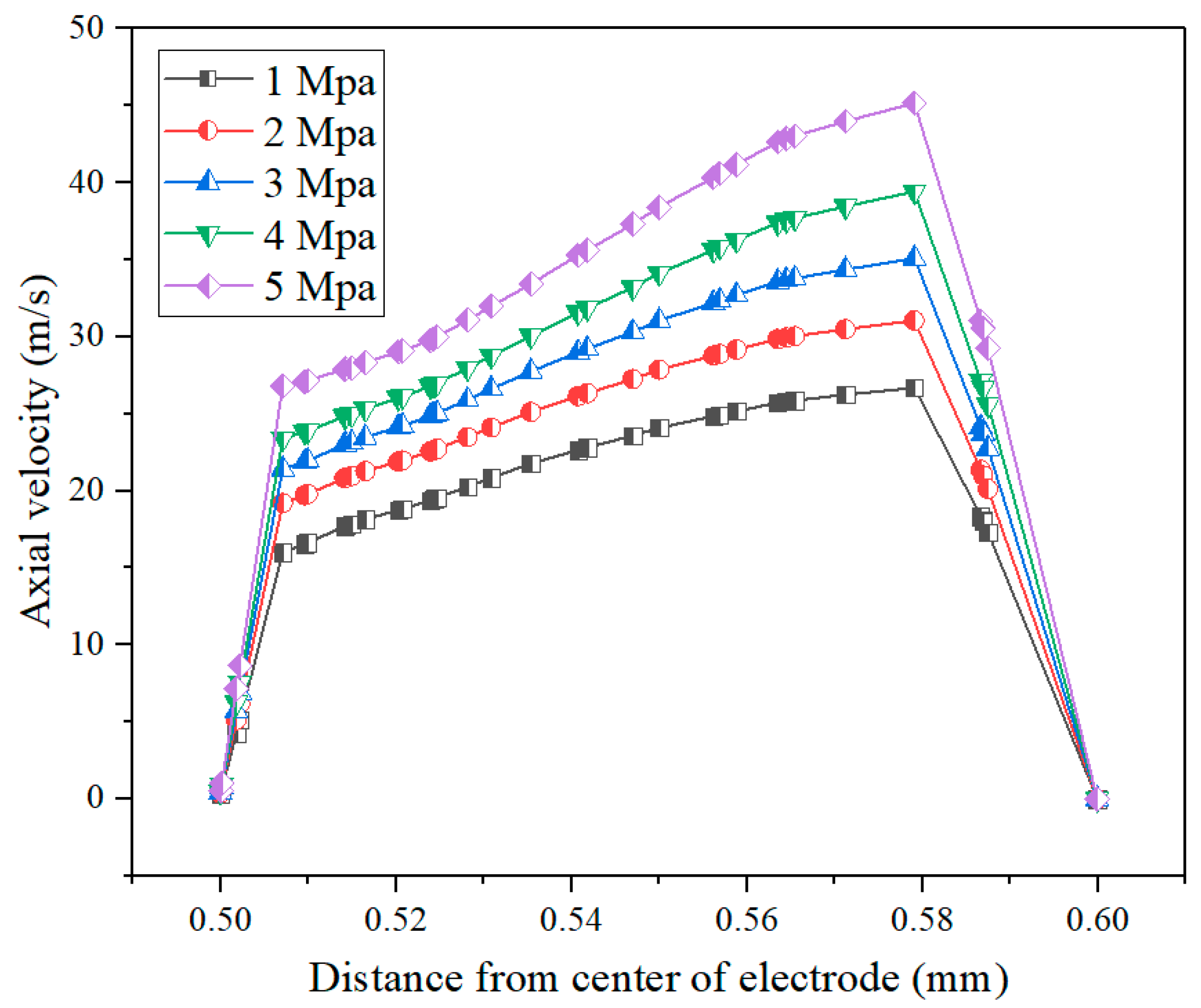
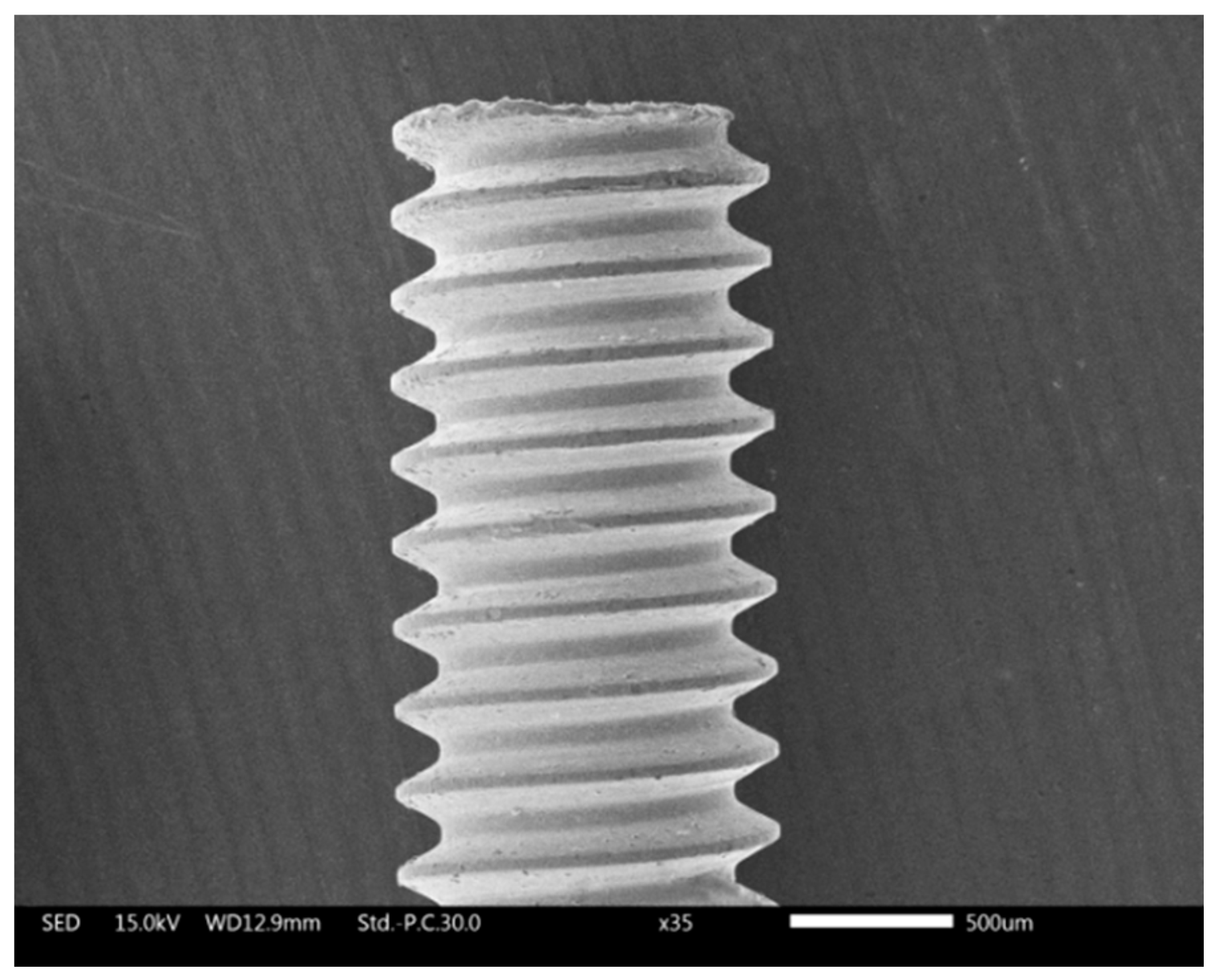
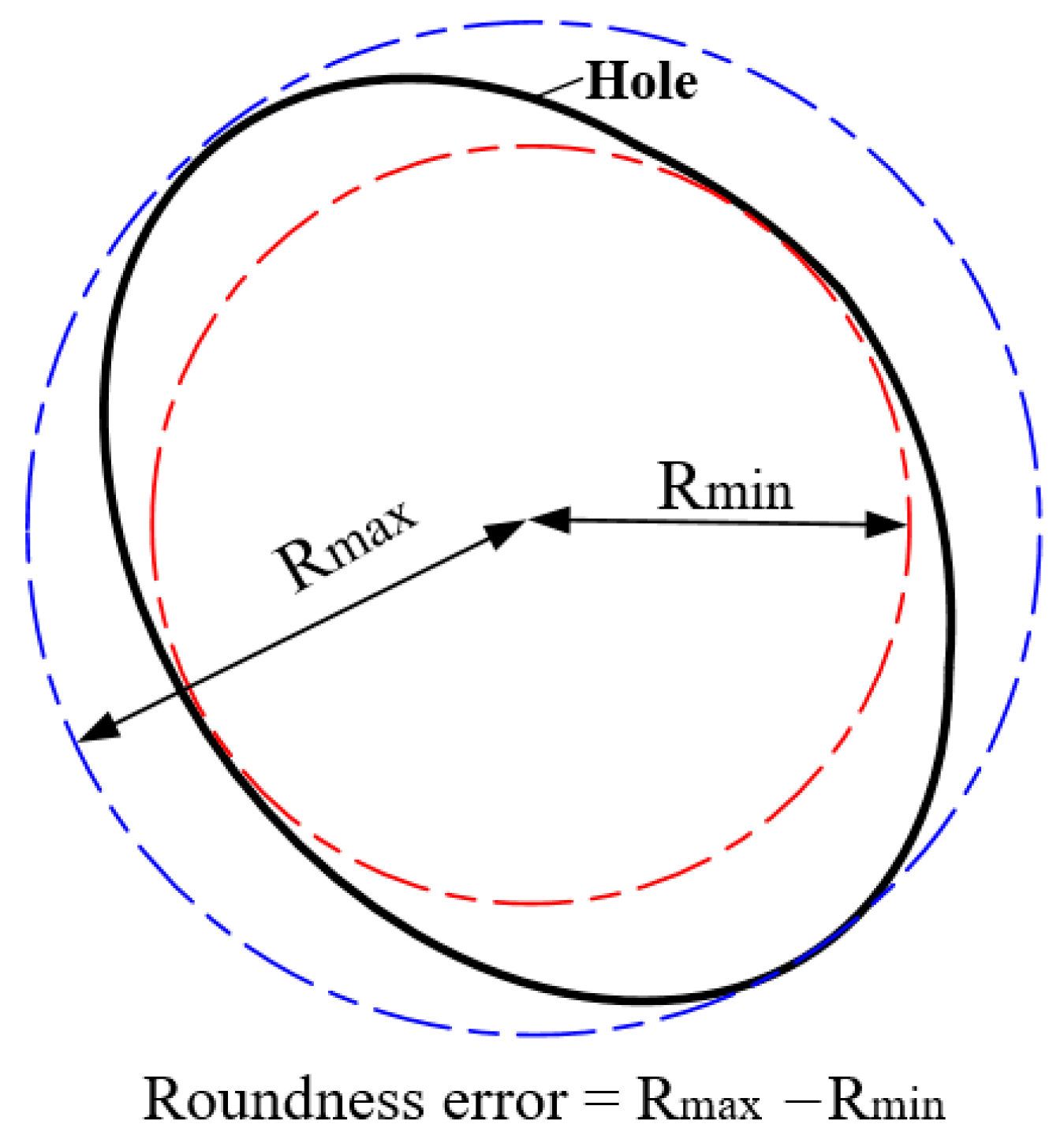

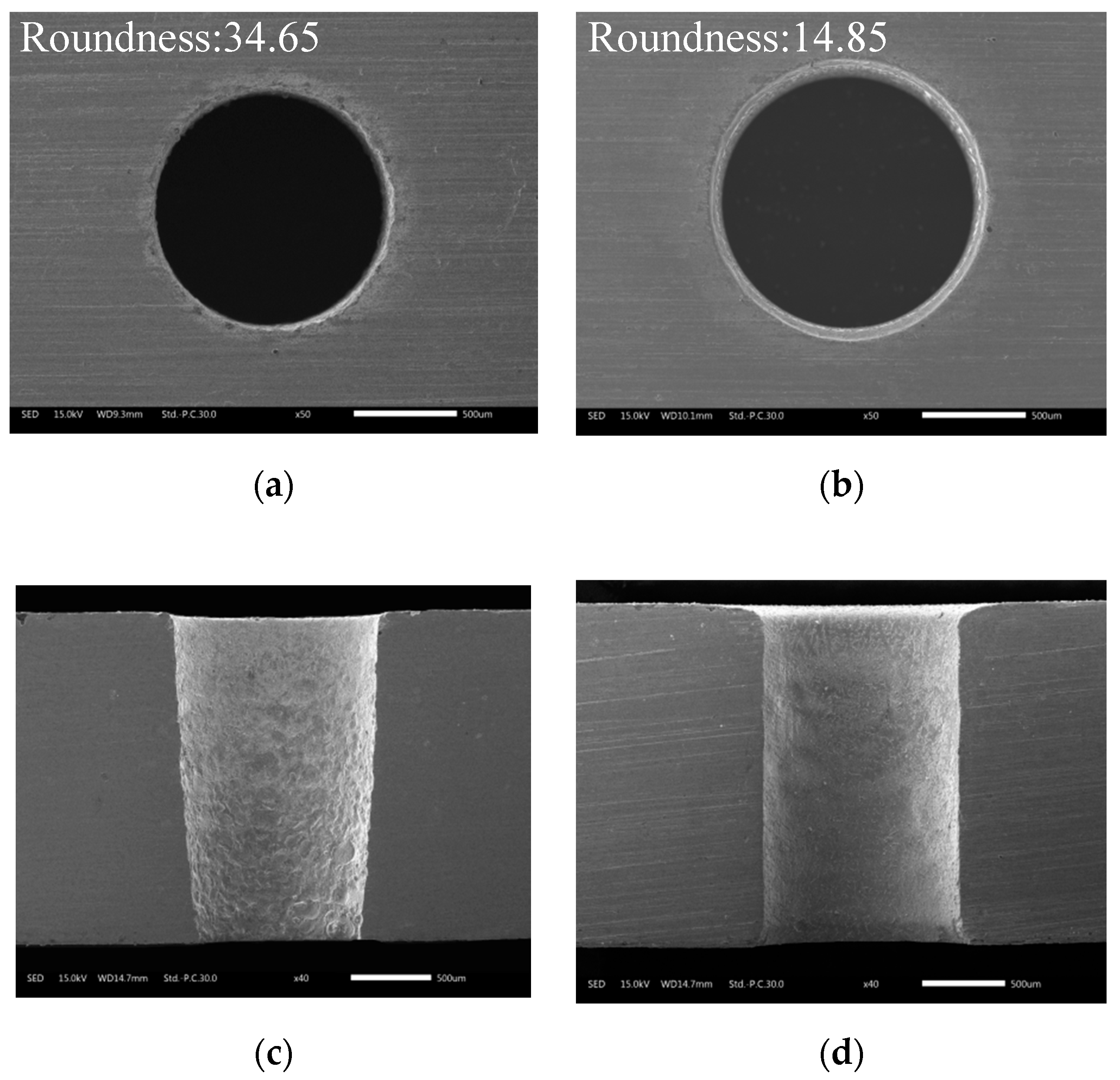


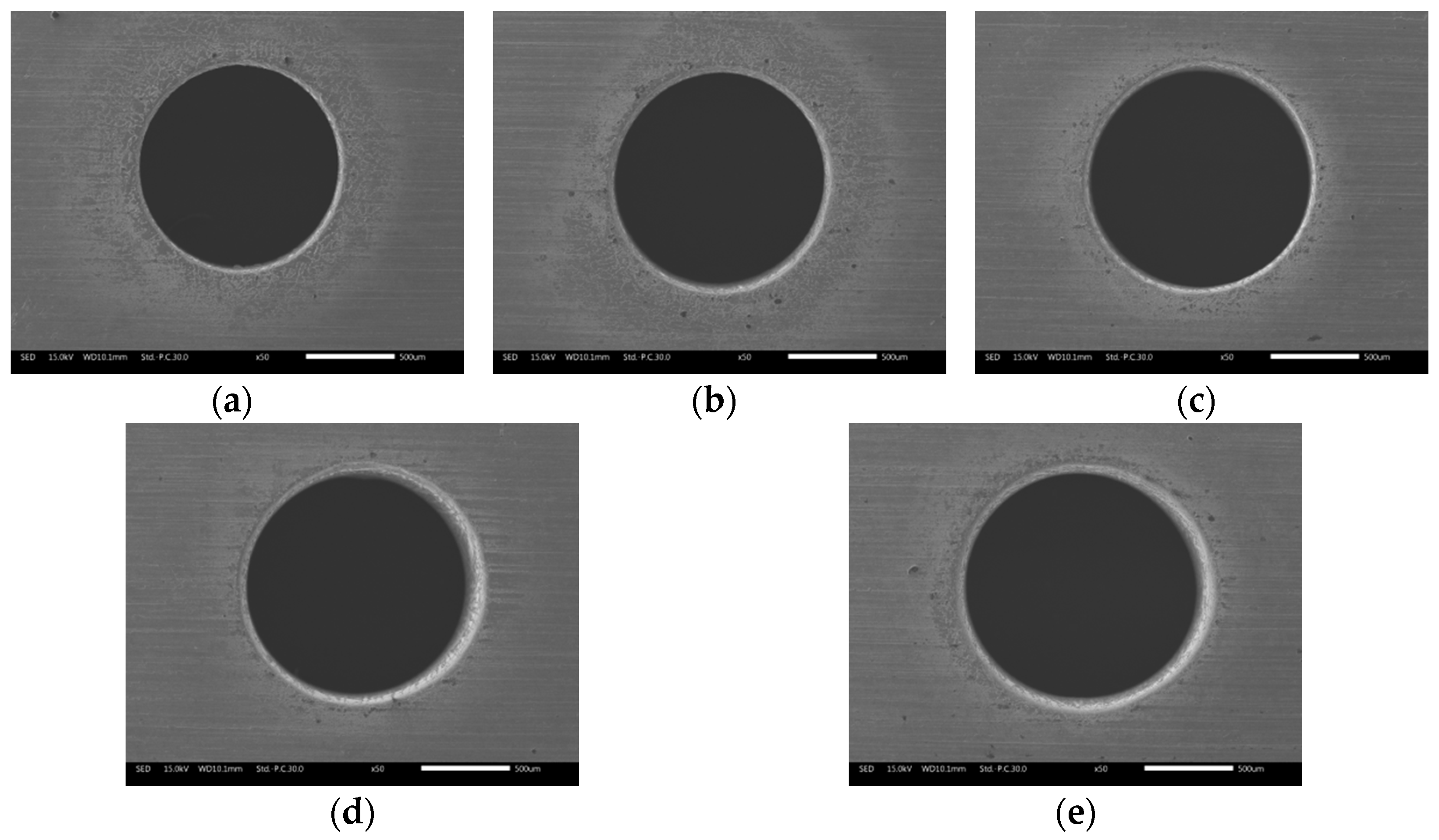
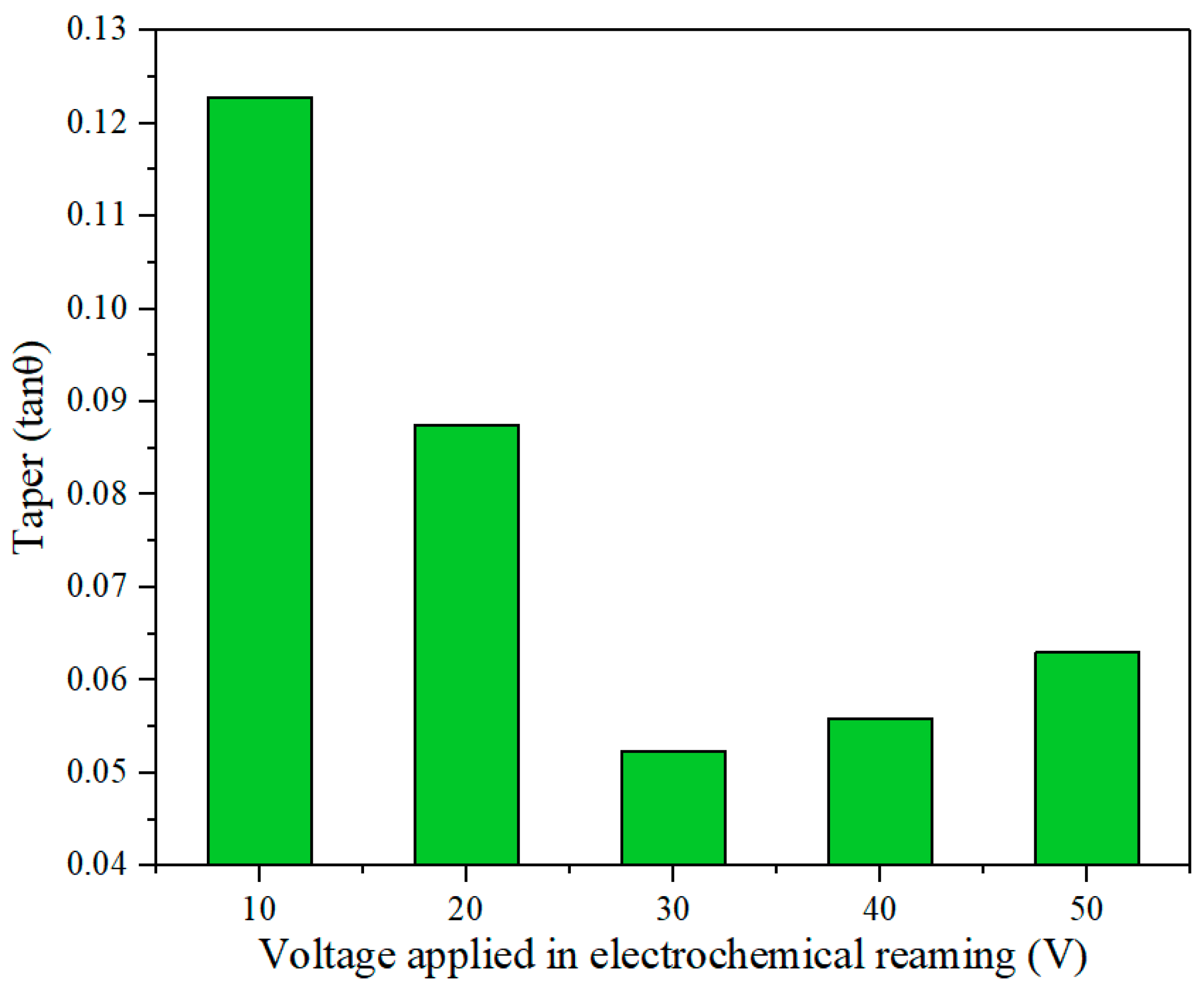
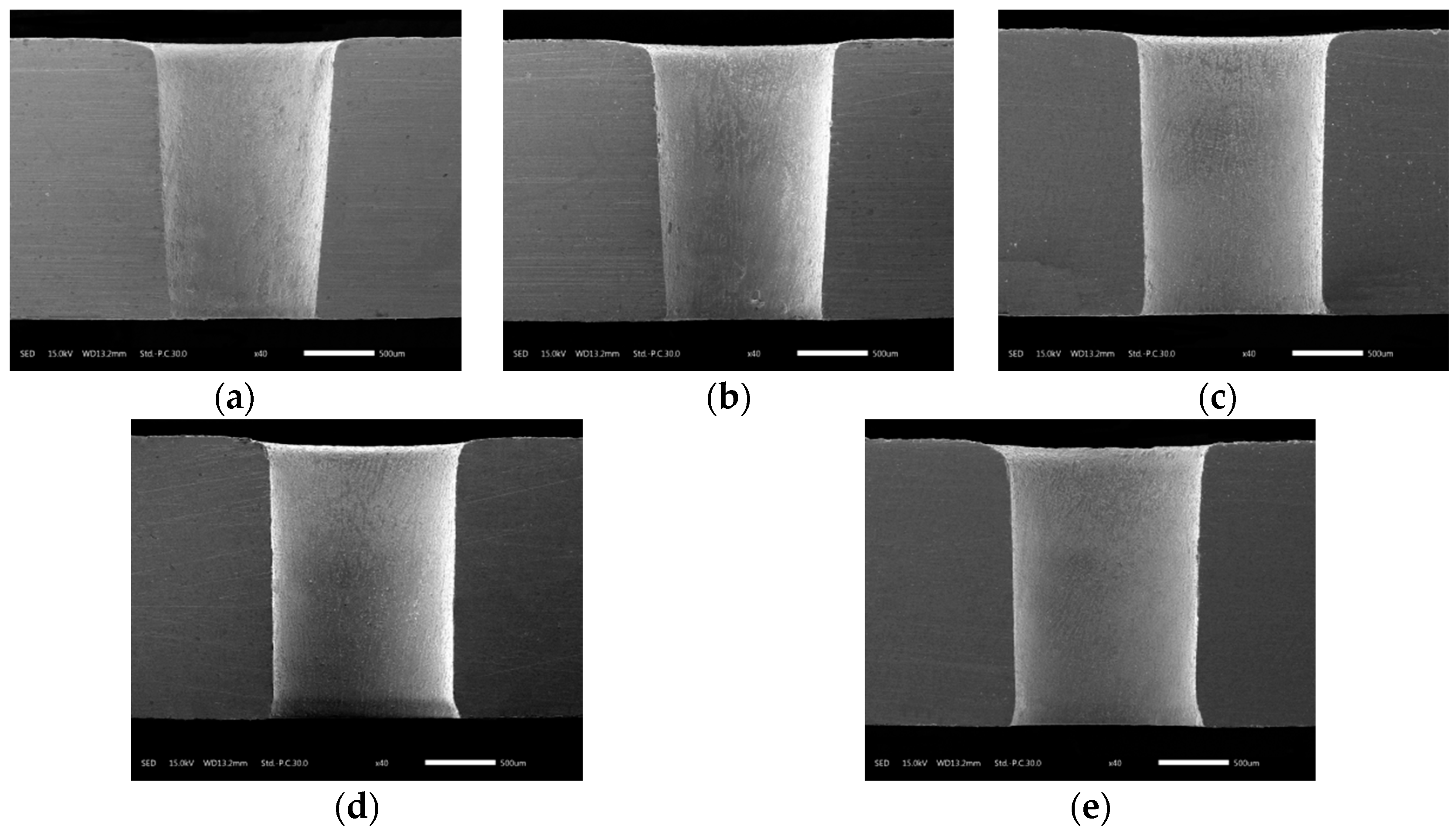
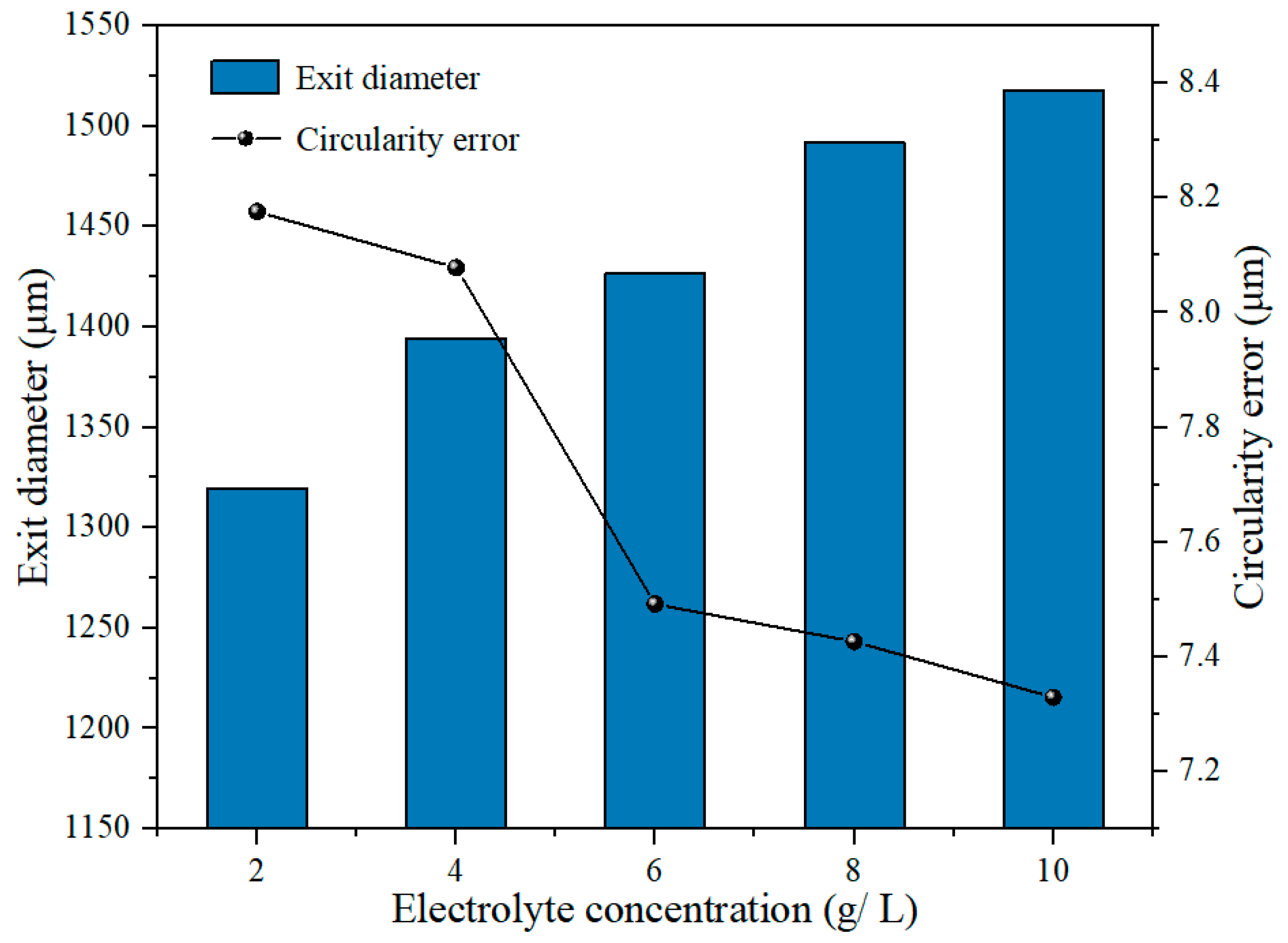
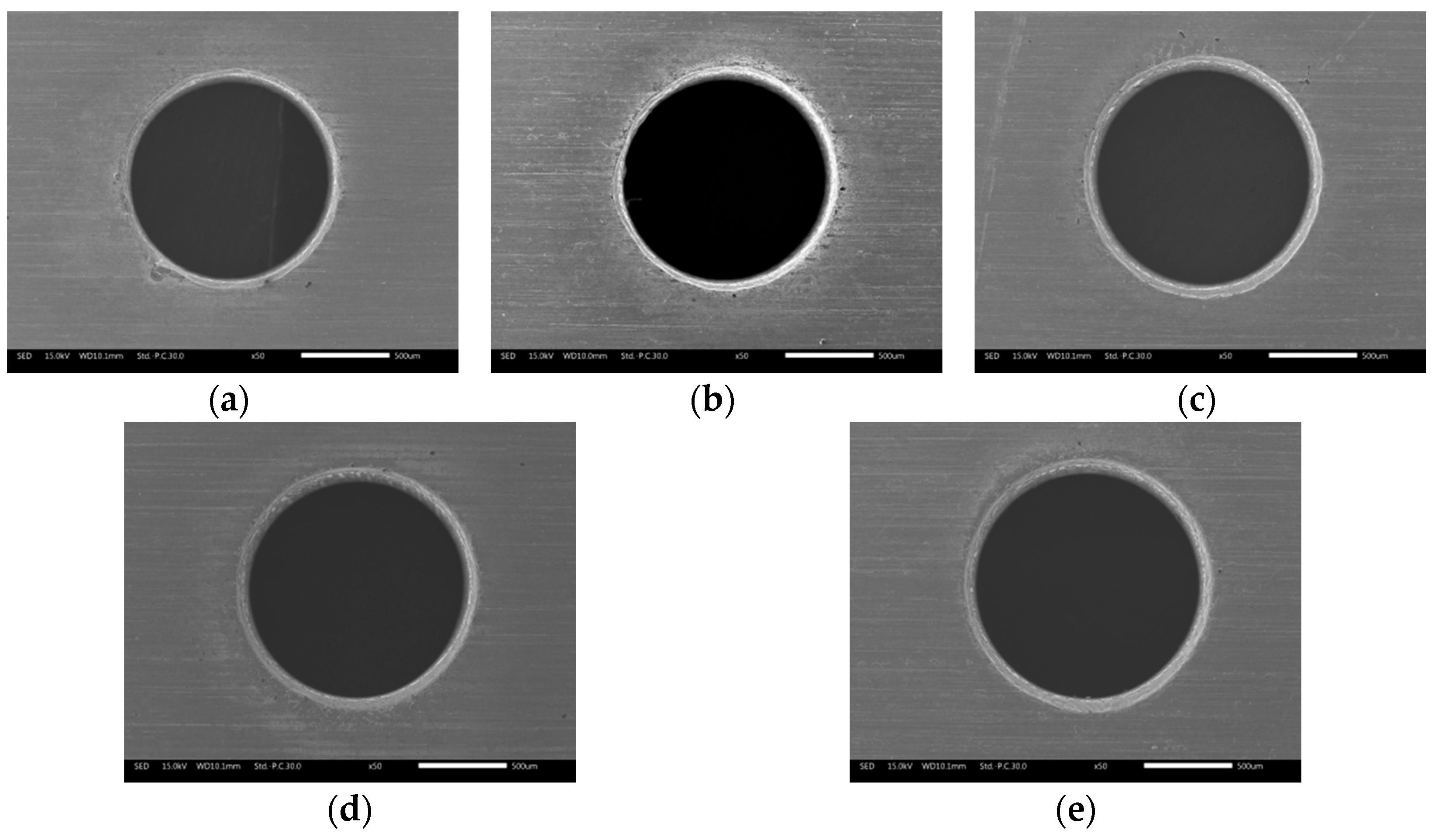
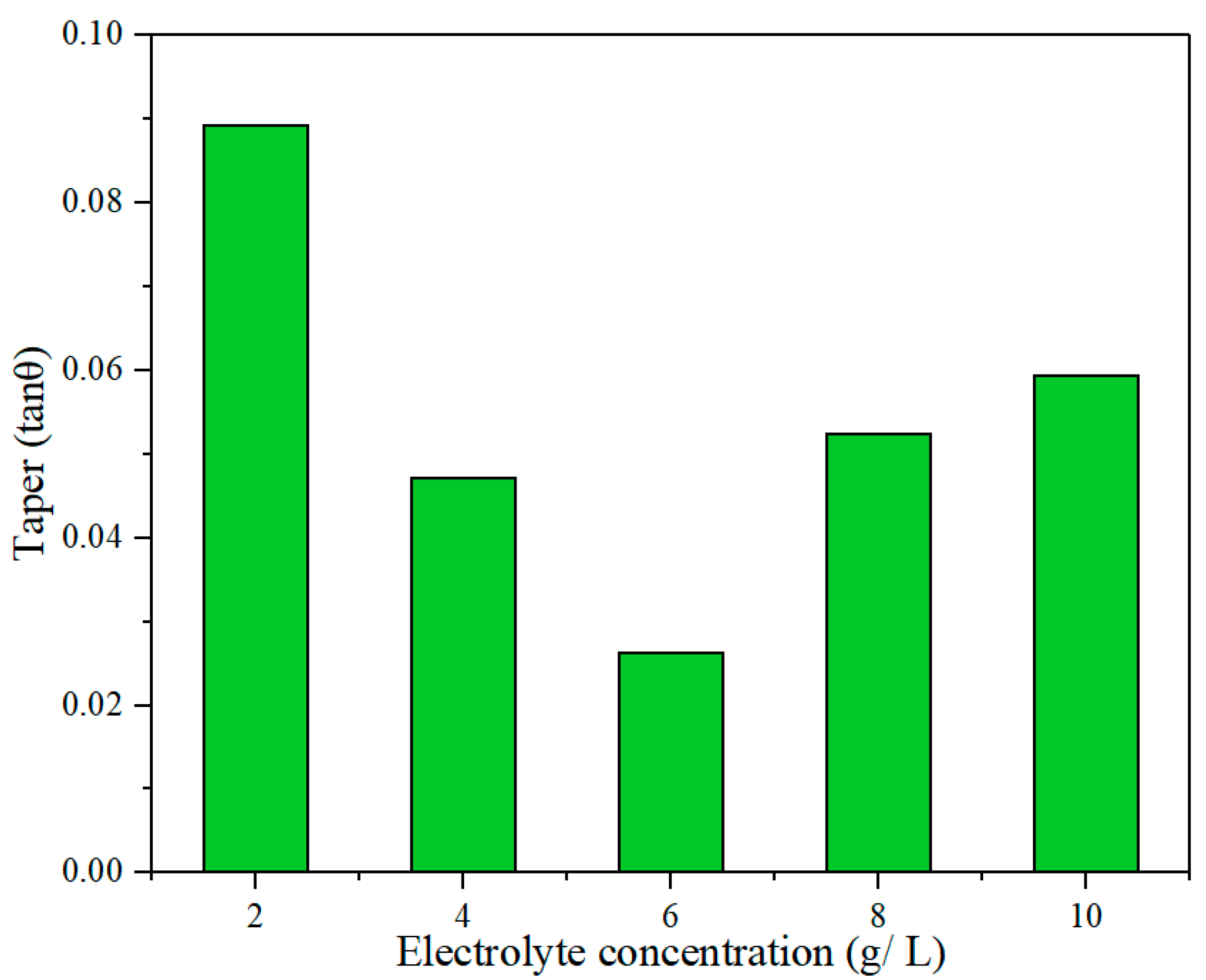
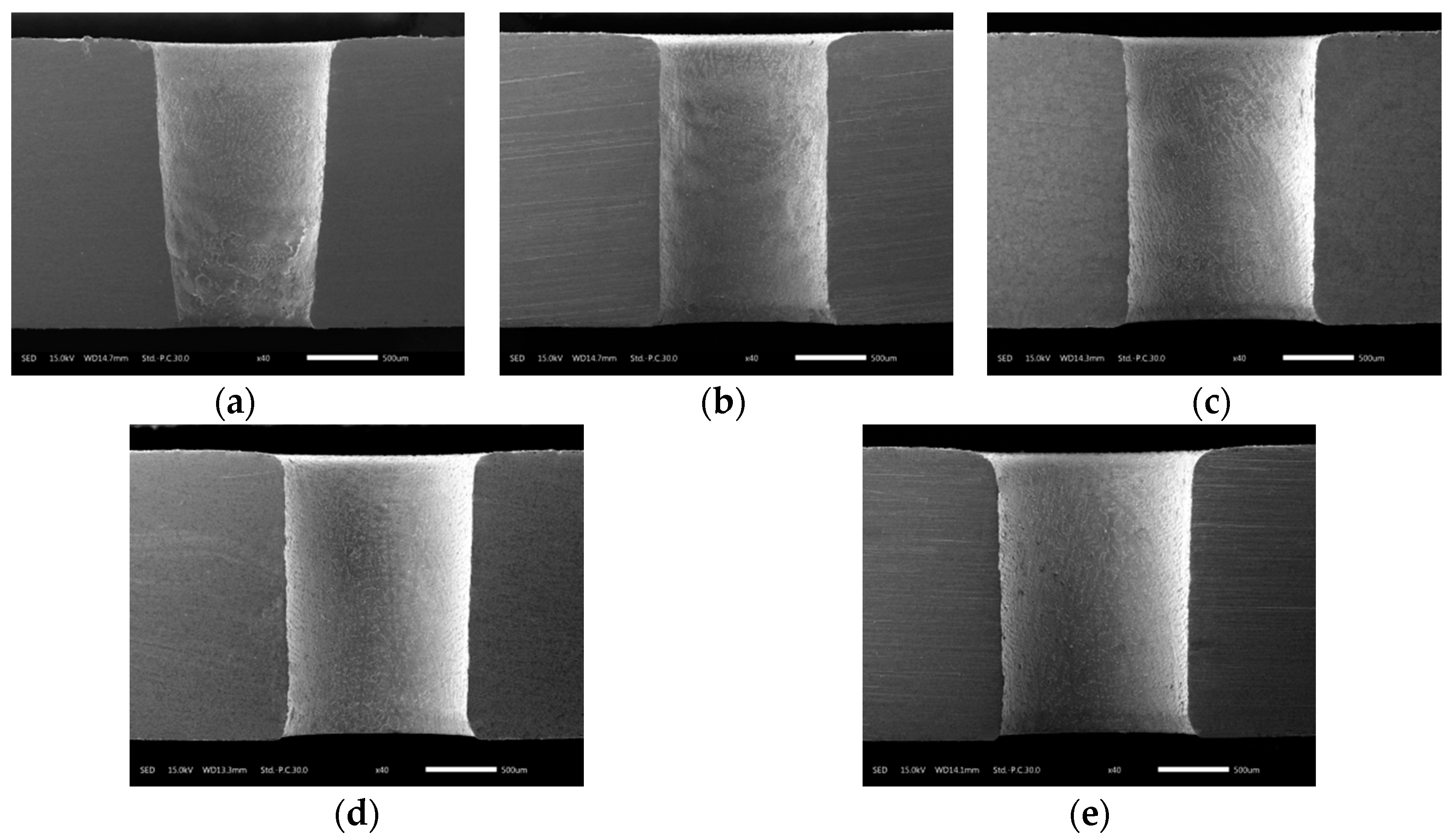
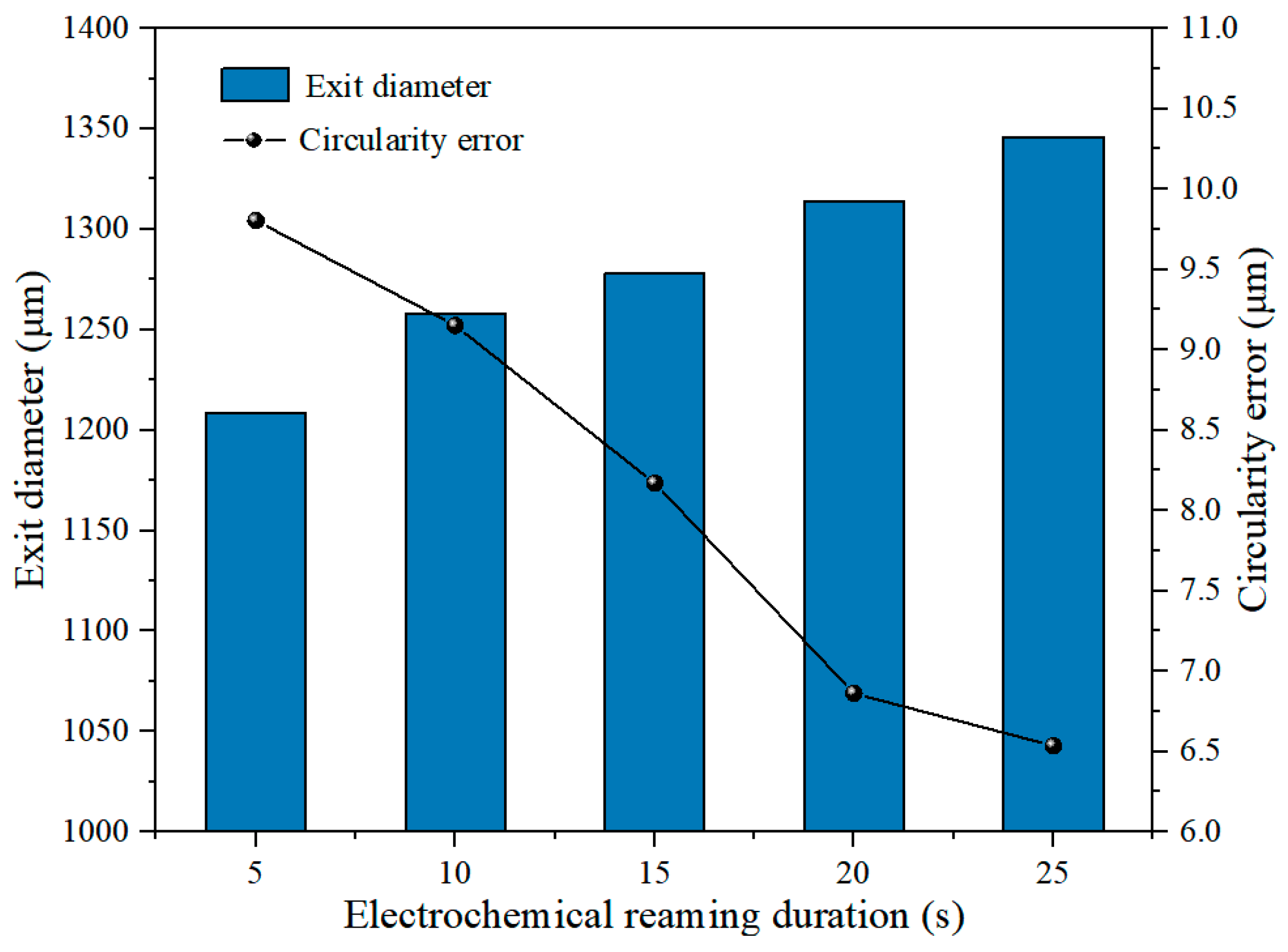
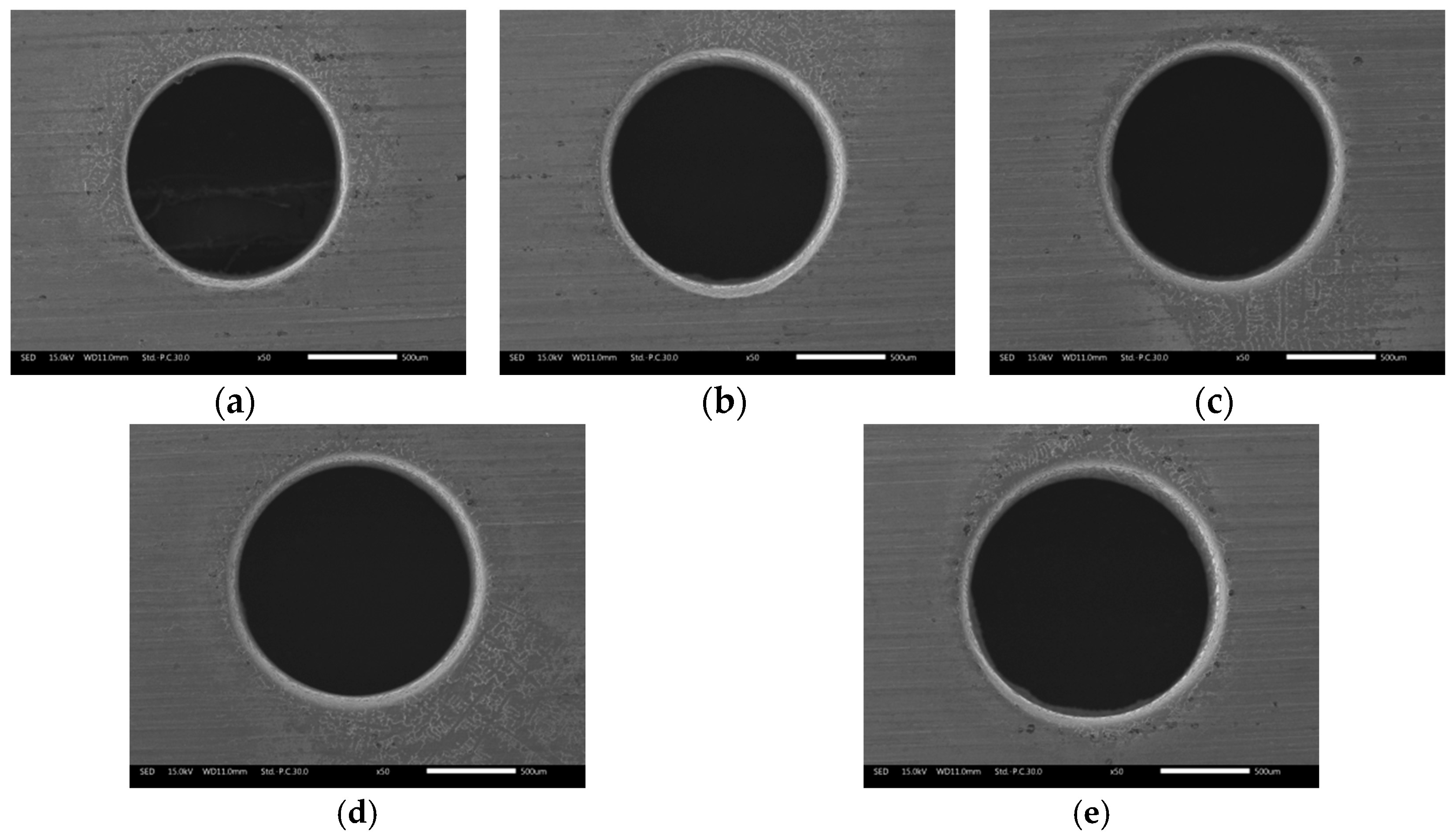

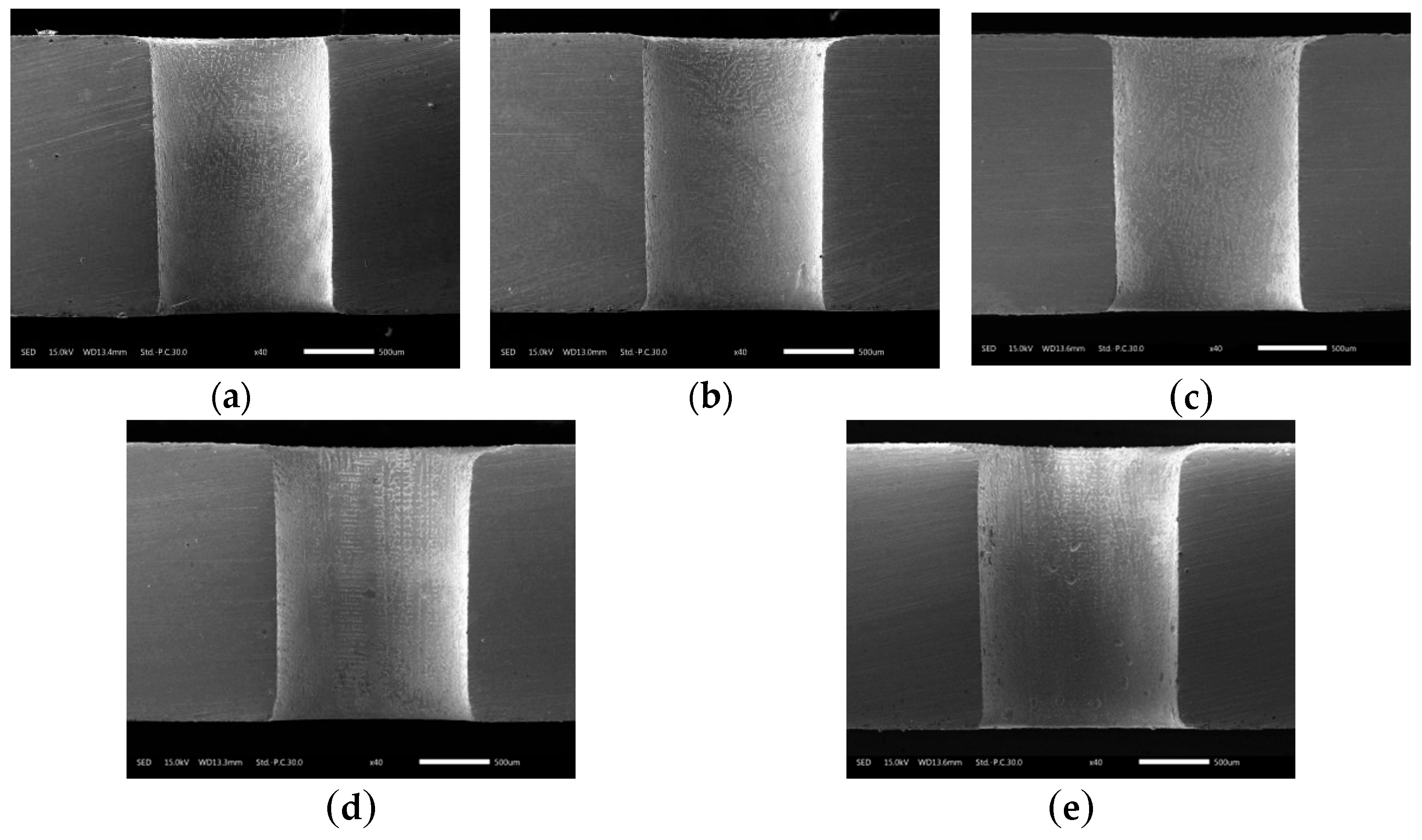
| Parameter | Value |
|---|---|
| Electrode diameter | 1 mm |
| Rotation speed of electrode | 480 rev/min |
| Pressure of working fluid | 3 MPa |
| Workpiece thickness | 2 mm |
| Parameter | Value |
|---|---|
| Flushing pressure | 4 MPa |
| Rotational speed of tool electrode | 300 rev/min |
| Pulse duration | 12 μs |
| Pulse interval | 12 μs |
| Peak current | 14 A |
| Parameter | Value |
|---|---|
| Flushing pressure | 4 MPa |
| Rotational speed of tool electrode | 300 rev/min |
| NaNO3 electrolyte concentration | 2, 4, 6, 8, or 10 g/L |
| Voltage amplitude | 10, 20, 30, 40, or 50 V |
| Electrochemical reaming duration | 5, 10, 15, 20, or 25 s |
© 2019 by the authors. Licensee MDPI, Basel, Switzerland. This article is an open access article distributed under the terms and conditions of the Creative Commons Attribution (CC BY) license (http://creativecommons.org/licenses/by/4.0/).
Share and Cite
Zhang, Y.; Wang, C.; Wang, Y.; Ni, Q.; Ji, L. Geometric Accuracy Improvement by Using Electrochemical Reaming with a Helical Tube Electrode as Post-Processing for EDM. Materials 2019, 12, 3564. https://doi.org/10.3390/ma12213564
Zhang Y, Wang C, Wang Y, Ni Q, Ji L. Geometric Accuracy Improvement by Using Electrochemical Reaming with a Helical Tube Electrode as Post-Processing for EDM. Materials. 2019; 12(21):3564. https://doi.org/10.3390/ma12213564
Chicago/Turabian StyleZhang, Yan, Chen Wang, Yu Wang, Qin Ni, and Lei Ji. 2019. "Geometric Accuracy Improvement by Using Electrochemical Reaming with a Helical Tube Electrode as Post-Processing for EDM" Materials 12, no. 21: 3564. https://doi.org/10.3390/ma12213564
APA StyleZhang, Y., Wang, C., Wang, Y., Ni, Q., & Ji, L. (2019). Geometric Accuracy Improvement by Using Electrochemical Reaming with a Helical Tube Electrode as Post-Processing for EDM. Materials, 12(21), 3564. https://doi.org/10.3390/ma12213564




